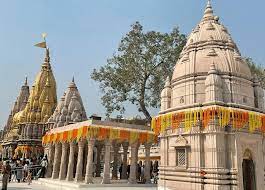Kashinath Temple stands as a testament to the architectural prowess and artistic finesse of ancient India. Nestled amidst serene landscapes, this sacred edifice captivates the imagination with its intricate design and spiritual significance. In this exploration, we embark on a journey to delve into the architectural marvels of Kashinath Temple, unraveling the secrets of its design and the symbolism imbued within its sacred precincts.
The Legacy of Nagara Style Architecture
At the heart of Kashinath Temple’s architectural design lies the Nagara style, a quintessential expression of North Indian temple architecture. Characterized by its towering spires, ornate carvings, and intricate sculptures, the Nagara style reflects the aesthetic sensibilities of ancient artisans and craftsmen. Each element of the temple’s design is meticulously crafted to evoke a sense of divine grandeur and spiritual transcendence.
Intricate Carvings and Symbolic Motifs
As visitors step through the hallowed portals of Kashinath Temple, they are greeted by a symphony of intricate carvings and symbolic motifs that adorn its walls and pillars. From scenes depicting mythological legends to celestial beings and divine deities, every facet of the temple’s architecture tells a story. The craftsmanship displayed in these carvings is a testament to the skill and dedication of the artisans who brought them to life, each chisel stroke imbued with devotion and reverence.
Towering Spires and Ornate Pillars
Rising majestically towards the heavens, the towering spires of Kashinath Temple command reverence and admiration. These intricately designed spires, known as shikharas, serve as a focal point of the temple’s architectural composition, symbolizing the cosmic axis that connects the earthly realm with the divine. Ornate pillars flank the temple’s entrance, their sculpted surfaces adorned with images of gods, goddesses, and mythical creatures, inviting pilgrims to embark on a journey of spiritual enlightenment.
Sacred Geometry and Cosmic Harmony
Central to the design of Kashinath Temple is the concept of sacred geometry, which seeks to harmonize the physical and metaphysical dimensions of existence. The layout of the temple is meticulously aligned with cosmic principles, with each architectural element serving as a conduit for divine energy. From the geometric patterns that adorn its walls to the spatial arrangement of its inner sanctum, every aspect of Kashinath Temple reflects a deeper understanding of the interconnectedness of all things.
Preserving the Architectural Legacy
Despite the passage of time, Kashinath Temple continues to stand as a testament to India’s rich architectural heritage. Efforts to preserve and protect the temple’s architectural legacy are ongoing, with conservation initiatives aimed at safeguarding its structural integrity and historical significance. Through these efforts, future generations will have the opportunity to marvel at the architectural marvels of Kashinath Temple and experience firsthand the awe-inspiring beauty of ancient Indian craftsmanship.
Conclusion:
In the labyrinth of time, Kashinath Temple stands as a beacon of architectural excellence and spiritual enlightenment. From its towering spires to its intricate carvings and sacred geometry, every aspect of the temple’s design speaks to the ingenuity and creativity of ancient India’s artisans and craftsmen. As we delve into the intricate design of Kashinath Temple, we are reminded of the enduring legacy of India’s architectural heritage and the timeless beauty of its sacred edifices. May the marvels of Kashinath Temple continue to inspire awe and reverence for generations to come, serving as a testament to the enduring spirit of human creativity and devotion.













